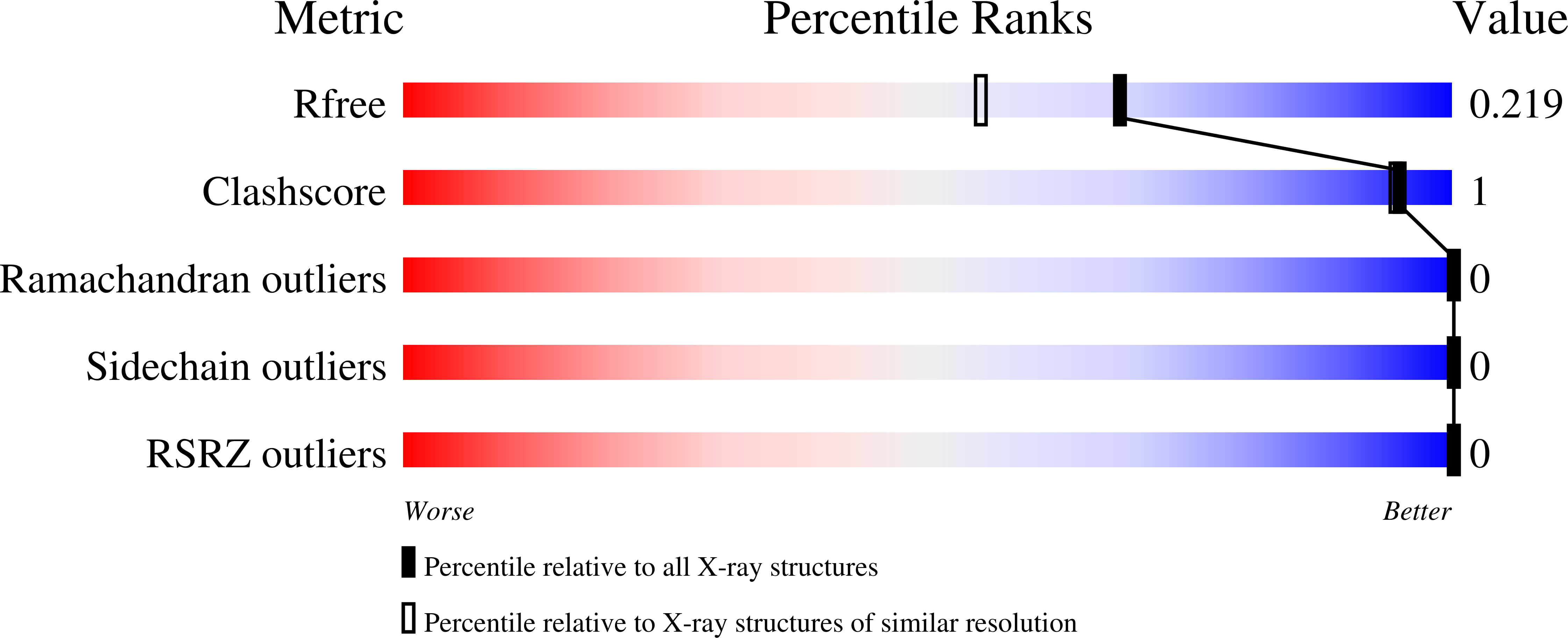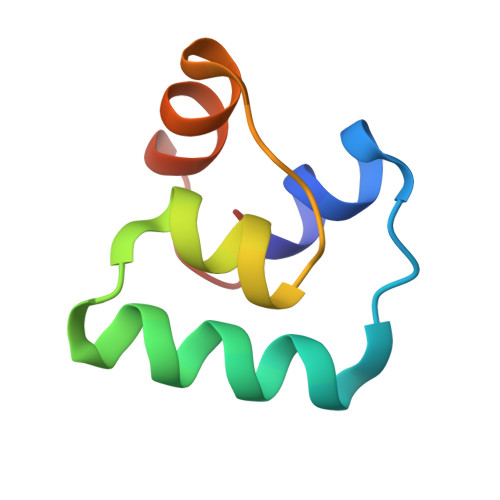Crystal structure and site-directed mutagenesis of circular bacteriocin plantacyclin B21AG reveals cationic and aromatic residues important for antimicrobial activity.
Gor, M.C., Vezina, B., McMahon, R.M., King, G.J., Panjikar, S., Rehm, B.H.A., Martin, J.L., Smith, A.T.(2020) Sci Rep 10: 17398-17398
- PubMed: 33060678
- DOI: https://doi.org/10.1038/s41598-020-74332-1
- Primary Citation of Related Structures:
6WI6 - PubMed Abstract:
Plantacyclin B21AG is a circular bacteriocin produced by Lactiplantibacillus plantarum B21 which displays antimicrobial activity against various Gram-positive bacteria including foodborne pathogens, Listeria monocytogenes and Clostridium perfringens. It is a 58-amino acid cyclised antimicrobial peptide, with the N and C termini covalently linked together. The circular peptide backbone contributes to remarkable stability, conferring partial proteolytic resistance and structural integrity under a wide temperature and pH range. Here, we report the first crystal structure of a circular bacteriocin from a food grade Lactobacillus. The protein was crystallised using the hanging drop vapour diffusion method and the structure solved to a resolution of 1.8 Å. Sequence alignment against 18 previously characterised circular bacteriocins revealed the presence of conserved charged and aromatic residues. Alanine substitution mutagenesis validated the importance of these residues. Minimum inhibitory concentration analysis of these Ala mutants showed that Phe 8 Ala and Trp 45 Ala mutants displayed a 48- and 32-fold reduction in activity, compared to wild type. The Lys 19 Ala mutant displayed the weakest activity, with a 128-fold reduction. These experiments demonstrate the relative importance of aromatic and cationic residues for the antimicrobial activity of plantacyclin B21AG and by extension, other circular bacteriocins sharing these evolutionarily conserved residues.
Organizational Affiliation:
Griffith Institute for Drug Discovery, Griffith University, Don Young Road, Nathan, QLD, 4111, Australia.















